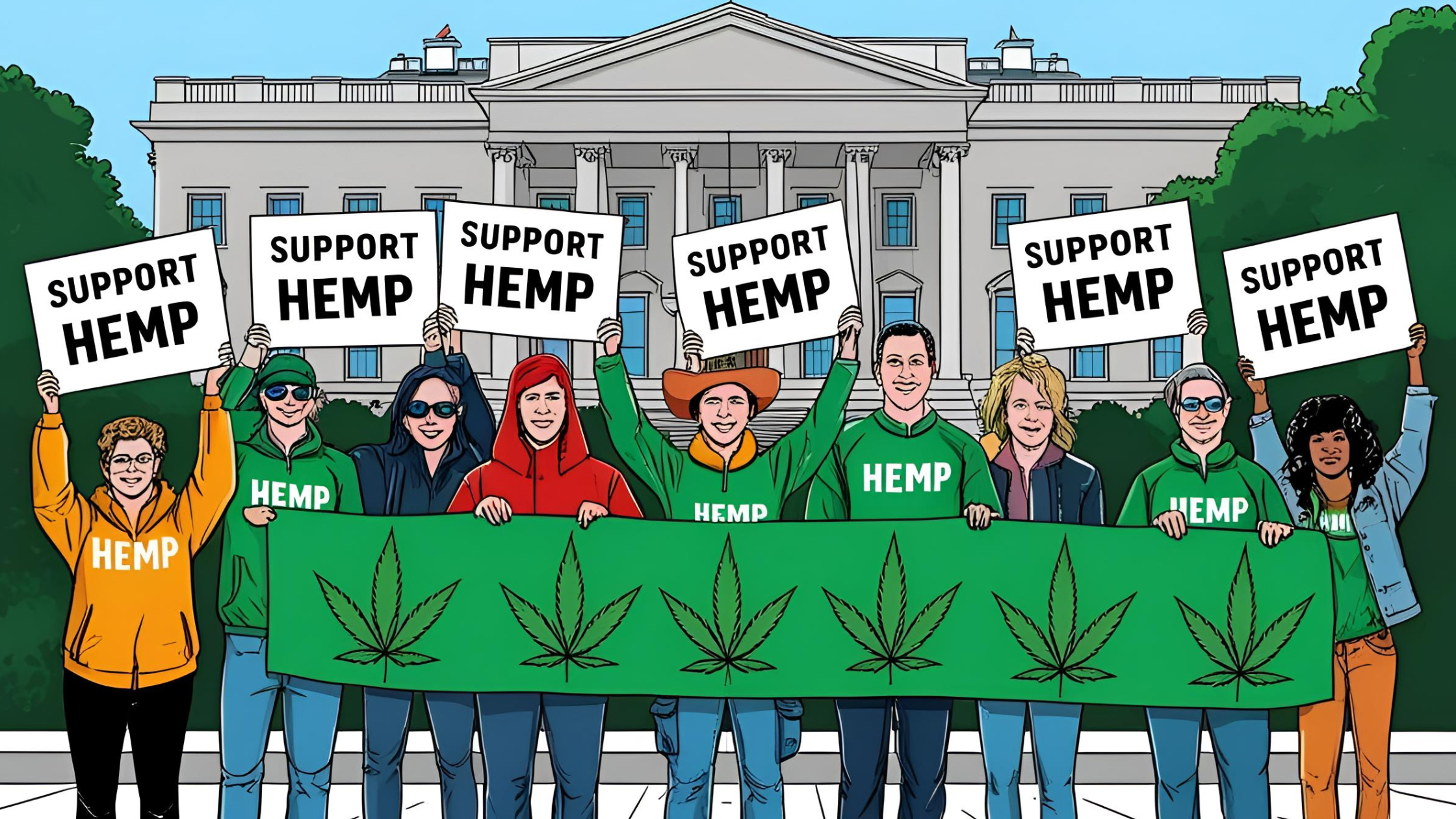
Why Ohio Needs a Strong Voice for Hemp Advocacy Now More Than Ever
Hemp is making headlines across the United States for its immense potential in everything from sustainable agriculture to innovative consumer goods. Yet, in Ohio, outdated legislation, consumer confusion, and market barriers still hold back the plant’s promise. If Ohio doesn’t step up its hemp advocacy efforts, businesses, farmers, and communities risk missing out on a transformational economic and environmental opportunity.
Understanding Hemp’s Comeback in Ohio
What is Hemp, and Why Does it Matter?
Hemp refers to varieties of the Cannabis sativa plant grown specifically for industrial or therapeutic uses, containing less than 0.3% THC (the psychoactive compound in marijuana). Hemp’s uses are vast, encompassing:
-
Agriculture: Sustainable crop rotation and soil regeneration
-
Consumer Products: Textiles, plastics, construction materials, health supplements
-
Environment: Biodegradable plastics, carbon sequestration, phytoremediation (soil cleansing)
After nearly a century of prohibition, the federal government legalized hemp through the 2018 Farm Bill. States like Ohio quickly passed legislation to regulate hemp cultivation—but challenges remain.
Snapshot of Hemp in Ohio
Since Ohio’s hemp program launched in 2019:
-
Nearly 500 hemp cultivation licenses have been issued (Ohio Department of Agriculture, 2023)
-
Dozens of Ohio-based companies now process and sell hemp goods, from CBD tinctures to hempcrete building supplies
-
Yet, unclear regulations and skepticism have kept the crop from reaching its full potential
The Major Barriers Facing Ohio’s Hemp Industry
Confusion in Legislation and Policy
Ohio’s regulatory environment for hemp remains complex. Definitions of legal hemp, medical marijuana, and prohibited cannabis derivatives sometimes overlap or contradict, confusing consumers and businesses alike. Misclassification at checkpoints or retail shelves can lead to unjust fines, legal disputes, and lost revenue.
Market Access and Banking Frustrations
Hemp companies often struggle to access banking services, insurance, and loans due to perceived legal risks—even though their operations are completely lawful at the state and federal level. Uncertainty makes it nearly impossible for startups to scale or even survive.
Gaps in Supply Chain and Processing
Ohio produces quality hemp, but local processing infrastructure remains underdeveloped. Most raw material is shipped out of state for extraction or manufacturing, causing Ohio to lose out on jobs and value-added opportunities.
Public Skepticism and Stigma
Despite the federal government’s clear distinction between hemp and marijuana, stigma persists. Misunderstandings about hemp’s properties slow down market acceptance, limit investment, and deter mainstream retailers from carrying hemp-derived products.
Why Ohio Urgently Needs Strong Hemp Advocacy
Unlocking Economic Growth
A robust hemp industry could bring thousands of jobs to Ohio’s rural and urban communities. According to the National Hemp Association, the U.S. hemp market could reach $16 billion by 2030, with demand surging for everything from hempcrete for green building projects in Cleveland to hemp seed oil supplements in Columbus.
Successful hemp states (like Kentucky and Colorado) show that with clear laws and active promotion, hemp can revitalize struggling farm economies, attract manufacturing jobs, and boost agritourism.
Supporting Sustainable Agriculture
Hemp’s rapid growth and deep root structure make it a powerful tool for soil health, erosion control, and carbon sequestration. Ohio’s farmers could use hemp both as a profitable crop and as a vital part of regenerative land management, reducing dependence on fertilizers and pesticides.
Consumer Demand is Rising
Ohioans are part of a national trend seeking sustainable, plant-based alternatives in wellness, textiles, and construction:
-
Hempcrete panels and insulation are gaining traction for their energy efficiency
-
Natural hemp fibers are making their way into clothing and home goods
-
CBD and CBG, extracted from hemp, are projected to see annual double-digit growth as consumers look for alternatives to pharmaceuticals
Supporting hemp doesn’t just help businesses; it empowers consumers eager for responsible choices.
What a Strong Voice for Hemp Looks Like
State-Level Advocacy
Ohio needs an active, unified coalition of stakeholders championing clear, consistent, and business-friendly hemp policies. This includes:
-
Simplifying regulations: Clarifying the difference between legal hemp and illegal cannabis, streamlining registration, and reducing bureaucratic hurdles
-
Protecting farmers: Raising awareness about crop insurance, legal protections, and market access
-
Educating law enforcement: Preventing unnecessary confusion and unfair targeting of lawful hemp enterprises
Public Education and Outreach
Advocacy groups, universities, and innovators must work together to combat misconceptions and introduce Ohioans to the science and benefits of hemp:
-
Educational campaigns: Public workshops, online resources, and partnerships with extension offices can build support and grow the market
-
Hemp expos and festivals: These events spotlight local producers, highlight hemp products, and invite consumers to learn (and taste!) firsthand
Industry Collaboration
Ohio’s hemp progress requires cooperation between growers, processors, researchers, and retailers. A strong statewide advocacy group can:
-
Expand co-op models for small farmers
-
Advocate for more local processing facilities
-
Connect manufacturers and universities to build a skilled workforce
Building a National Reputation
States making bold moves for hemp quickly become innovation hubs, attracting investment, research, and top talent. Ohio’s strategic location and agricultural pedigree put it in prime position to lead—but only if it acts now.
Steps Ohio Can Take to Lead on Hemp
Update and Unify the Regulatory Framework
Regular reviews of hemp-related laws, led by a collaboration of policymakers, scientists, and industry representatives, can clear up inconsistencies. Ohio agencies should align on definitions and processes to prevent confusion and keep law enforcement, retailers, and farmers on the same page.
Invest in Processing and Supply Chains
Targeted incentives, grants, and partnerships with universities or private investors can jumpstart local hemp processing, ensuring maximum economic benefit stays within Ohio.
Support Outreach and Education
State agencies and advocacy organizations should invest in widespread public education to replace outdated notions with fact-based, contemporary understanding of hemp’s benefits.
Encourage Sustainable Practices
Provide resources, education, and incentives for farmers implementing regenerative or organic methods with hemp as a core crop.
Foster Banking and Business Support
Legislators should work with Ohio banks and credit unions to update guidelines, ensuring hemp businesses can access basic financial services like any other lawful enterprise.
Looking Ahead: Hemp’s Moment for Ohio
Ohio stands at a turning point. The case for strong hemp advocacy is clear:
-
The economic upside is enormous and proven in other states.
-
Consumer and environmental demand continues to accelerate.
-
Barriers to the industry’s growth are lower now than at any time in recent history.
But these benefits won’t materialize on their own. They require coordinated, vocal, and informed advocacy from every corner of the state. Stakeholders who care about Ohio’s agricultural legacy, economic future, and sustainable innovation must make hemp a policy and public engagement priority.
Take Action and Learn More
Ohio’s hemp future depends on what we do now. If you’re a farmer, business owner, educator, or consumer, your voice matters. Connect with local advocacy groups, attend upcoming policy hearings, or reach out to your representatives about supporting a clear, pro-hemp agenda.
To learn more about Ohio hemp regulations and opportunities, visit the Ohio Department of Agriculture’s Hemp Program or join one of the state’s emerging advocacy coalitions.

